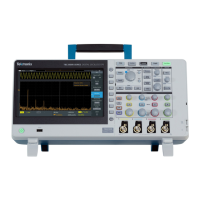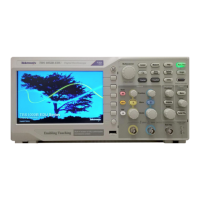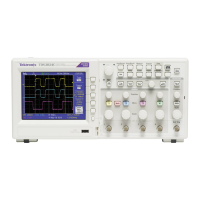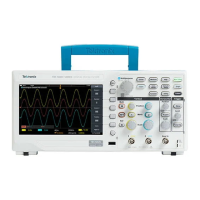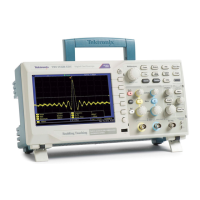Table 7: Parts of a block argument
Symbol Meaning
<NZDig> A nonzero digit character, in the range
1-9 Specifies the number of <Dig> elements that
follow
<Dig> A digit character, in the range 0-9
<DChar> A character with the hex equivalent of
00 through FF hexadecimal (0 through
255 decimal)
<Block> A block of data bytes, defined as:
<Block> := { #<NZDig><Dig>[<Dig>...]
[<DChar>...] | #0[<DChar>...]<terminator> }
The following figure shows an example of a block argument.
Figure 2: Block argument example
<NZDig> specifies the number of <Dig> elements that follow. Taken together,
the <Dig> elements form a decimal integer that specifies how many <DChar>
elements follow.
#0 means that the <Block> is an indefinite length block. The <terminator> ends
the block. You should not use indefinite length blocks with RS-232, because
there is no way to include a <terminator> character as a <DChar> character.
The first occurrence of a <terminator> character signals the end of the block and
any subsequent <DChar> characters will be interpreted as a syntax error. With
the GPIB, the EOI line signals the last byte. With the USB, the EOM bit signals
the last byte.
Command Syntax
12 TBS2000 Series Programmer
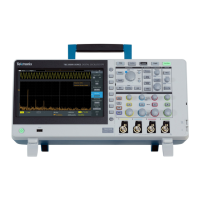
